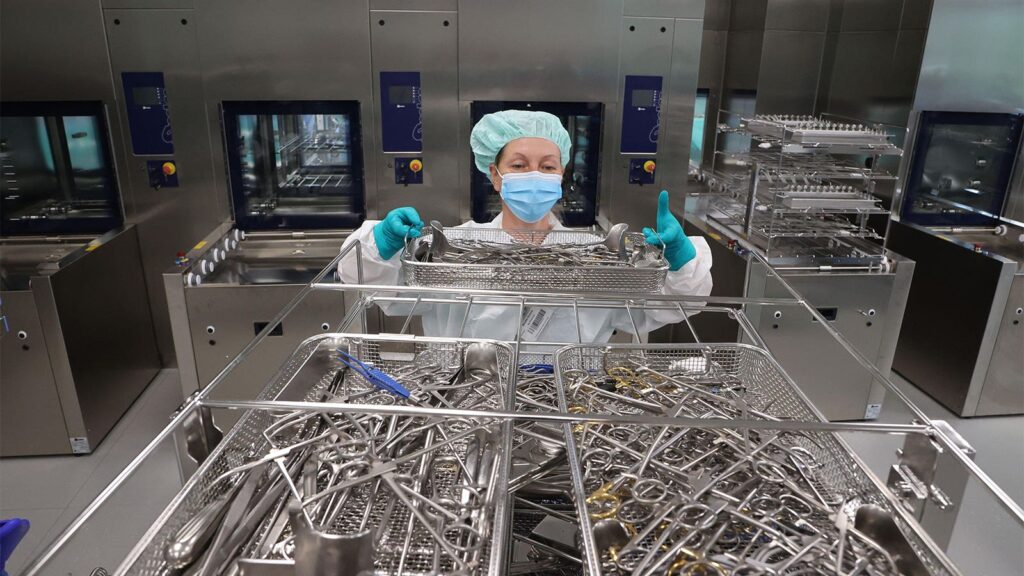The Environmental Protection Agency (EPA) issued a final rule on Thursday that aims to markedly reduce cancer risks for those living near commercial sterilization facilities by lowering toxic emission standards for ethylene oxide.
Ethylene oxide, the most commonly used sterilant for medical devices in the U.S., is used for everything from wound dressings to endoscopes to surgical kits. Approximately 50% of devices that require sterilization are sterilized using ethylene oxide, according to an EPA fact sheet.
The latest standards for ethylene oxide facilities represent the “strongest measures in U.S. history to reduce emissions of EtO [ethylene oxide], one of the most potent cancer-causing chemicals,” and would slash emissions nationwide for such facilities by more than 90%, an EPA press release noted.
In raw numbers, the rule would reduce emissions of ethylene oxide by 21 tons each year, the fact sheet said.
Lisa Patel, MD, executive director of the Medical Society Consortium on Climate and Health, told MedPage Today that 13 to 14 million people live near ethylene oxide facilities, which are often situated in low-income communities and communities of color.
In the short term, ethylene oxide irritates the eyes, nose, throat, and lungs. “And then in the long term, it has been linked to lymphoid and breast cancer, as well as damage to the brain, and to the nervous and reproductive systems,” she added.
The population most vulnerable to these health risks are children, Patel said.
“Children, especially in the first few years of life, are outside more. They are pound for pound breathing in more of these toxins because they breathe faster and their lungs are in a rapid phase of development during this time,” she explained.
The Clean Air Act requires the EPA to review and revise air toxic standards every 8 years to account for new practices, processes, and advances in control technologies, the EPA fact sheet noted. “Due to changes in our understanding of the health effects of ethylene oxide, EPA has conducted a second residual risk review for commercial sterilization facilities using ethylene oxide in order to ensure that the standards provide an ample margin of safety to protect public health.”
The resulting rule balances research on toxic exposures with the need for a “safe and reliable supply of medical sterilization devices,” the agency said, citing a capital cost estimate of $313 million.
“We have followed the science and listened to communities to fulfill our responsibility to safeguard public health from this pollution — including the health of children, who are particularly vulnerable to carcinogens early in life,” said EPA Administrator Michael S. Regan in the press release.
The EPA engaged in “extensive outreach” to communities and stakeholders, including public hearings, national webinars, and regional public meetings. Feedback from public hearings and more than 40,000 comments informed the final rule, which the agency stressed provides “sufficient time and flexibility” for facilities to achieve compliance.
The final rule applies to emissions at just under 90 commercial sterilizers owned and operated by about 50 companies. With the final rule, the EPA will amend the National Emission Standards for Hazardous Air Pollutants to include the following changes:
- Creating standards for currently unregulated emissions; for example, building leaks and chamber exhaust vents
- Bolstering current standards for sources of ethylene oxide, including sterilization chamber vents and aeration room vents
- Mandating continuous emissions monitoring and quarterly reporting for nearly all commercial sterilizers, to communities, states, Tribes, local government, and the EPA, to show that emissions are not escaping into outdoor air
- Requiring that sterilizers abide by emission standards during startup, shutdown, and malfunctions
The final rule is a step forward for President Biden’s Cancer Moonshot Initiative and also aligns with the Biden administration’s commitment to environmental justice and protecting the most vulnerable communities from harm from exposure to toxic chemicals, including children.
Patel said she views the rule as “a compromise between what those in the public health world would like to see with what industry was asking for, in terms of making the timeline a little bit longer for compliance … There’s always going to be a back-and-forth between protecting health and what industry can achieve, and I think that this rule accomplishes that.”
Ashley Thompson, senior vice president for public policy analysis and development for the American Hospital Association, said in a press release that while hospitals rely on effectively sterilized medical devices, “they also work every day to protect and advance the health of the communities they serve.”
The final rule “includes policies recognizing the fragility of the medical device supply chain as the Administration works toward the critically important goal of reducing these [ethylene oxide] emissions,” Thompson wrote, acknowledging the additional time to reach compliance and the option for facilities with technology constraints to apply for temporary extensions.
In January, the FDA announced that it now considers vaporized hydrogen peroxide “an established method of sterilization for medical devices,” underscoring its efforts to encourage the use of ethylene oxide alternatives where possible.
Please enable JavaScript to view the comments powered by Disqus.
Source link : https://www.medpagetoday.com/publichealthpolicy/environmentalhealth/109209
Author :
Publish date : 2024-03-15 16:38:07
Copyright for syndicated content belongs to the linked Source.
